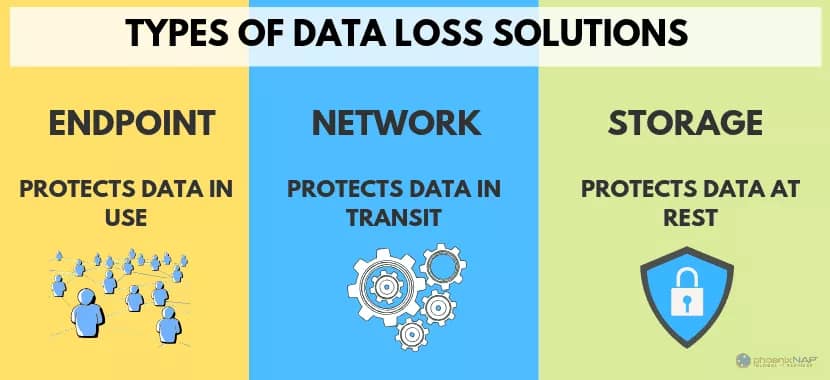More than ever, organizations of all shapes and sizes are turning to MSPs and MSSPs to help them navigate and secure the borderless, cloud-first world of work.
Let’s face it. Data security is more challenging for organizations than ever. With the rise of BYOD, SaaS applications and shadow IT – combined with the regulatory pressures of laws like HIPAA, the GDPR and CCPA – many companies are struggling to maintain visibility and control over their sensitive data.
With their advanced knowledge and tools, it makes sense that MSSPs and MSPs are becoming intrinsic to enterprise operations.
However, MSPs and MSSPs have their own challenges to overcome. Demand for their services is soaring at a remarkable rate. At the same time, many of these providers still rely on legacy tools and solutions that put too much onus on the customer – and aren’t 100% accurate.
To keep their customers happy and fuel their growth, IT and security service providers need to rethink their approach to mitigating risk in the form of cost-effective, easy-to-deploy solutions.
The current data security challenges MSPs and MSSPs face
If you’re an MSP and MSSP reading this, you’ll undoubtedly relate to some of the challenges below:
Outdated security tools
Perimeter security tools like firewalls, endpoint antivirus and secure web gateways all have their place in the modern MSSP’s security arsenal – but they certainly shouldn’t be front and center.
Today, the perimeter is fast becoming obsolete. As more people work remotely and in the cloud, these solutions leave gaps in security that put customer data at risk of leakage and theft.
For example, traditional DLP solutions work through a process of pattern recognition. They look for sensitive data within structured enterprise files that are saved in on-premises servers. However, today, most data in the enterprise is unstructured and unregulated. In fact, it’s predicted that by 2024, 80% of organizations’ data will be unstructured. Within this context, traditional DLP isn’t that much of a valuable solution for MSSP customers.
Traditional DLP solutions are also built on hard and fast policies that require constant, manual updating. For example, let’s say an employee is not allowed to send sensitive data to a particular email address. However, the employee manually types in someone’s email address and includes a mistake. The email is sent, and the DLP solution doesn’t stop it, as it doesn’t recognize the “to” address as blocked. This kind of human error – which is expected in the workplace – can undermine an MSSP.
Instead of using clunky, complex tools, MSPs and MSSPs need a new approach to DLP. One that is automated, self-learning and cloud-based (more on that below!)

High costs
The total cost of ownership is a crucial factor MSSPs and MSPs must consider. Developing software in-house is often too expensive for most MSSPs – both from a design and maintenance perspective. The financial implications tend to outweigh the benefits. However, purchasing expensive third-party DLP tools is also unappealing and can eat away at the bottom line.
In this paradigm, many MSSPs and MSPs are turning to third-party DLP providers who offer their solutions as a service. These are cloud-based DLP tools that are easy to deploy, intuitive, and require little MSSP management – the vendor does all the heavy lifting!
Mounting demand
Client demand, skills shortages and complex environments mean that many security providers feel like they are juggling too many balls at once. Often, their DLP solutions add to the burden rather than take away from it.
This is because data usage patterns are dynamic and complex, requiring effort to adjust and fine-tune DLP policies. Due to this complexity, existing DLP tools tend to generate many false positives.
Worse still, a single false signal can trigger dozens of notifications, promoting MSSPs to waste time on unnecessary activities. As a result, there’s a drain on IT and security team productivity, leading to “alert fatigue.”
What to look for in a DLP provider
For all the challenges MSSPs and MSPs face, there are solutions. By choosing wisely, IT and security providers can supercharge their data security offerings, find new cost efficiencies and ensure their customers’ data stays secure.
With that in mind, here are the features to look for in a DLP platform:
No/Low code software products for customers
Gartner predicts that 65% of application development will be low code by 2024. Low and no-code platforms are a blessing for MSSPs, helping them overcome installation issues and maintenance by delivering security as a cloud service.
With our DLP solution, for example, MSSPs can set their customers up in a matter of minutes. Integration is super fast and straightforward. It’s as simple as ‘plug and play’. The platform features autonomous remediation capabilities and also incorporates natural language processing.
By making security autonomous and super simple to deploy, MSSPs can reach new audiences and scale their security offerings.
How easy is it to change policies
The business world is super fast-moving. The perfectly configured DLP policies of yesterday won’t be relevant today. As such, your customers need a DLP solution that enables dynamic policy changes at speed and scale.
Not only that, but ideally, you want a solution that has contextual awareness of the compliance and security challenges your customers face.
Our solution offers ready to use policy templates for HIPAA, PCI, PHI, GDPR, and CCPA. With an intuitive interface, it’s also simple for non-technical users to configure custom compliance policies seamlessly.
Auto remediation capabilities
More and more security vendors are releasing AI-enhanced security products. The number of solutions out there means you could quickly end up spending hundreds of thousands of dollars.
For MSSPs, it is best to start with the essentials. The most significant security risk to businesses is a data breach or leak in today’s world. These incidents can cost companies loads in time, resources, compliance fines and reputation.
So, what you need is a solution that helps your customers automate data protection; one that can identify, protect and secure sensitive data no matter where it is – be it in the cloud or on-premises.
This is where AI-powered, cloud DLP solutions like Polymer come in. Our solution identifies, alerts & secures sensitive data like PII and PHI in real-time in cloud applications, file storage platforms, ticketing systems & codebases.
The solution is self-learning and automated, meaning you rarely need to interfere. ‘Self-learning’ means the DLP picks up on sensitive data patterns based on pre-defined data classification policies your company entered when first installing the program.
Risk measurement by default
Next-generation DLP solutions are contextually-aware. This means that they can protect against insider threats by spotting and responding to suspicious activity in real-time.
Underlying our learning algorithm is a data structure built on advanced graph database capabilities. A metadata centric knowledge graph enables us to query and create a contextual catalog of data assets across siloed environments. This allows the platform to look at risks holistically across multiple endpoints – and take appropriate action.
Foster a culture of security and improve employee awareness
What if your DLP solution could not only prevent breaches, but helps to reduce accidental insider threats from making the same mistake in future?
Our solution does just that. As well as securing your customers’ sensitive data in real-time, it will alert employees if an action they’ve tried to take could harm data security. At the same time, our engine blocks the action from occurring, so data security isn’t compromised.
Over time, these in-app nudges can effectively build a data security culture by putting security front of mind for employees – without taking them away from their workflow. In fact, we’ve found that our solution reduces risky data sharing behavior by over 70% in 1 month.










